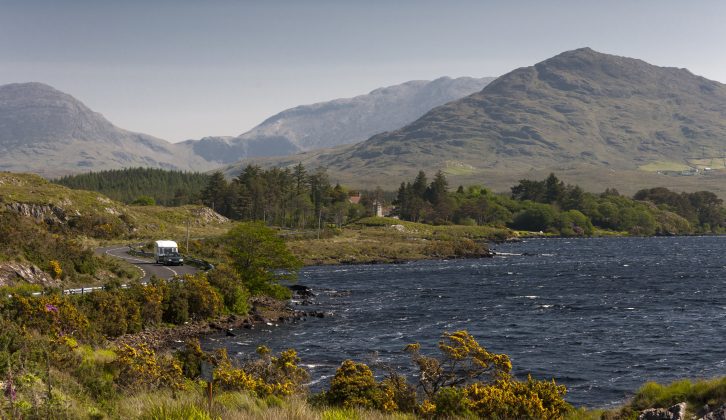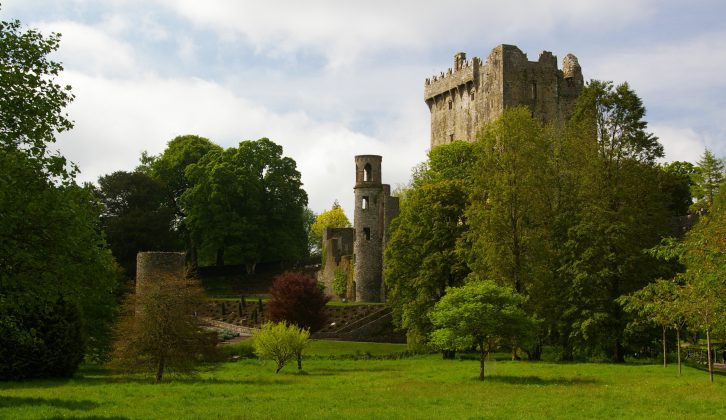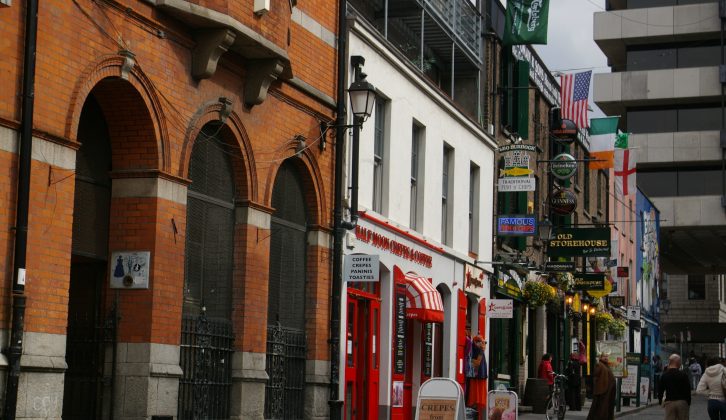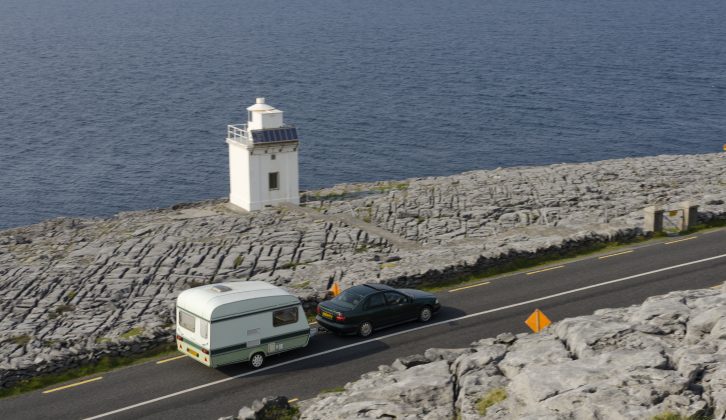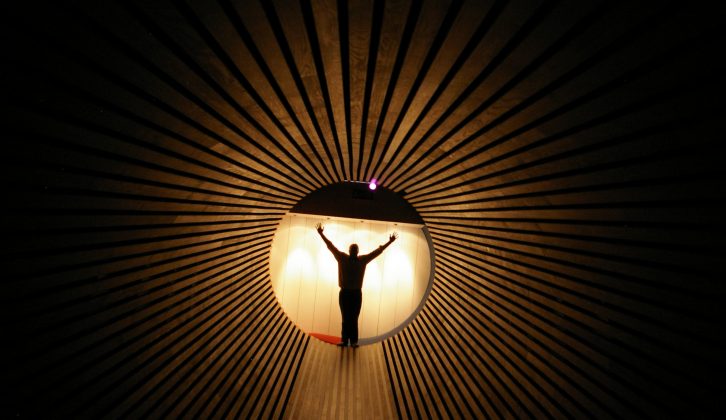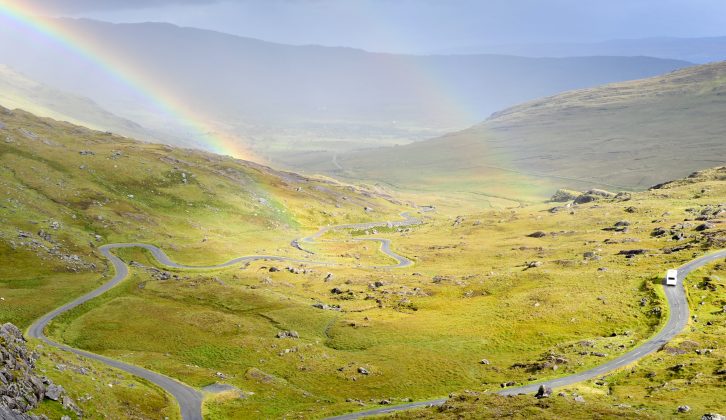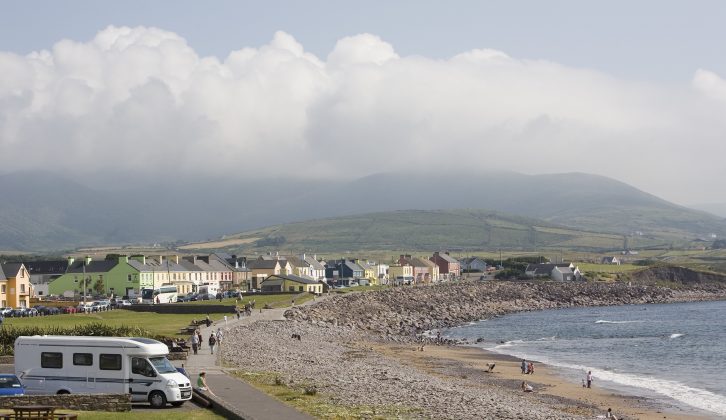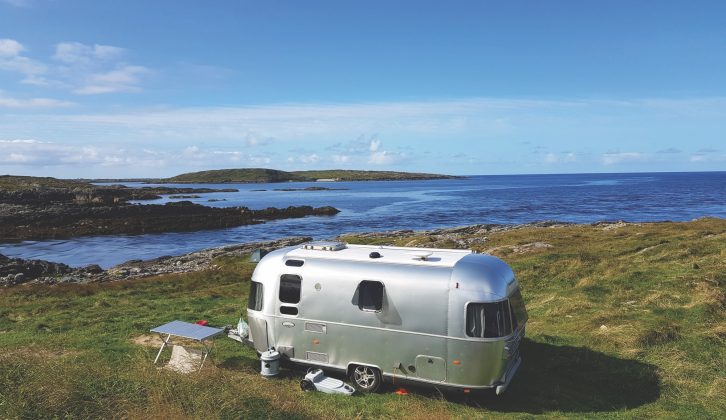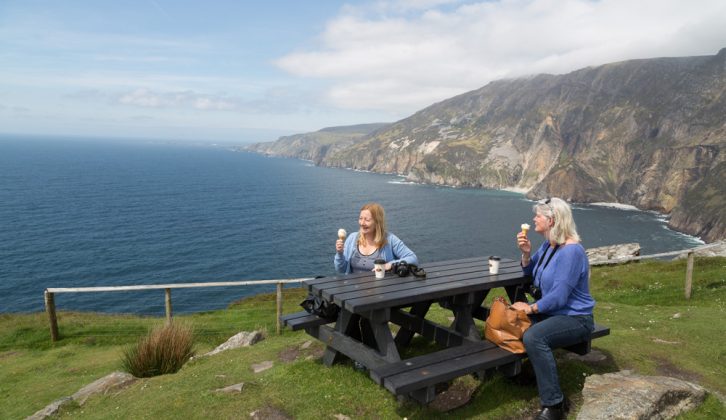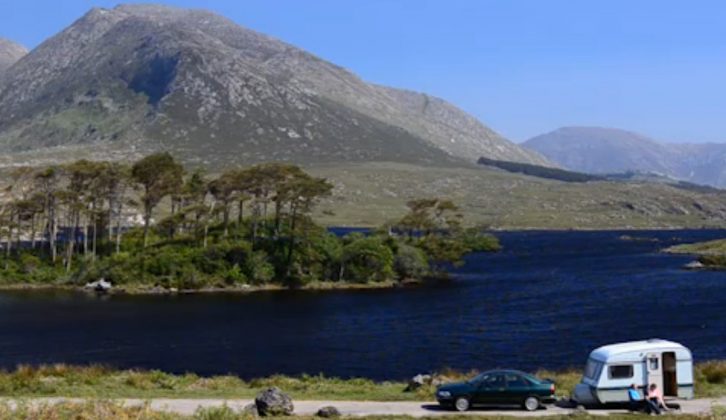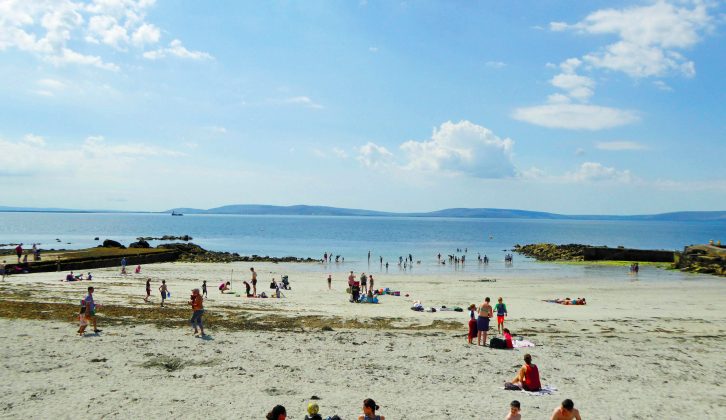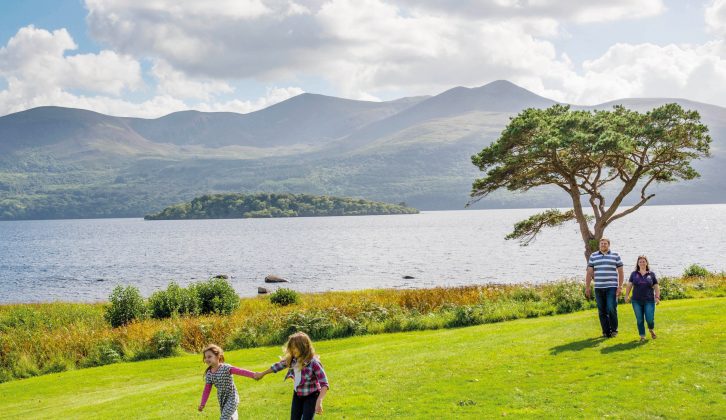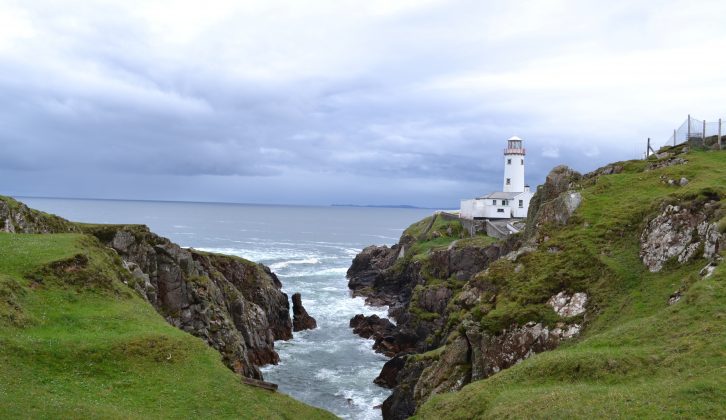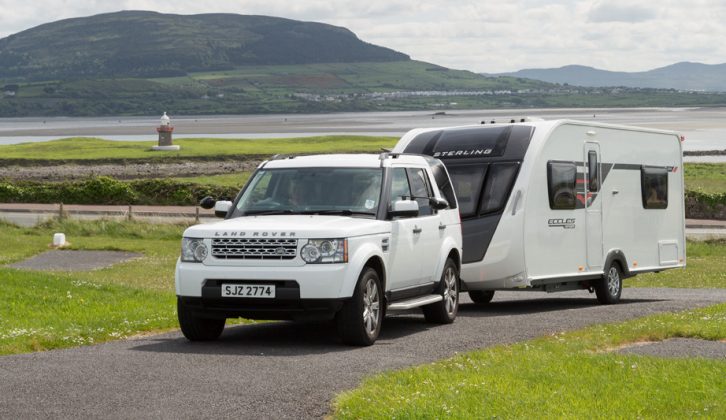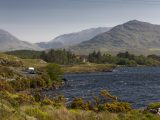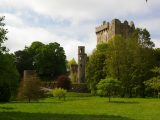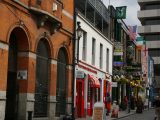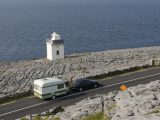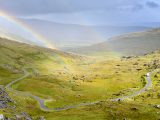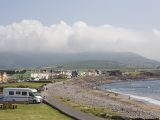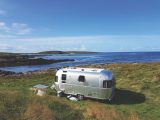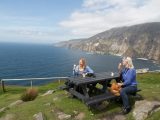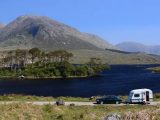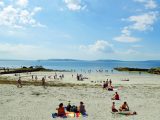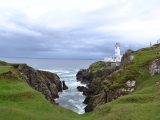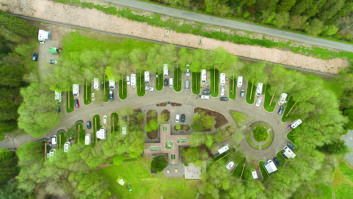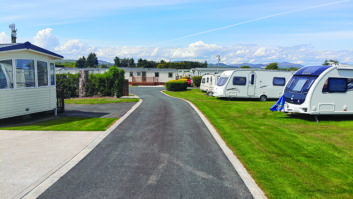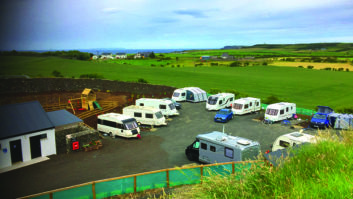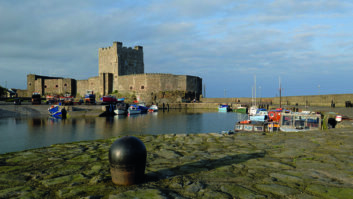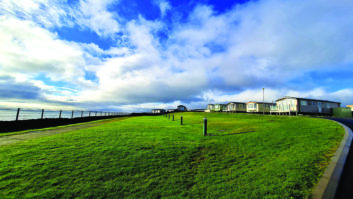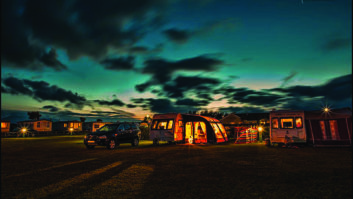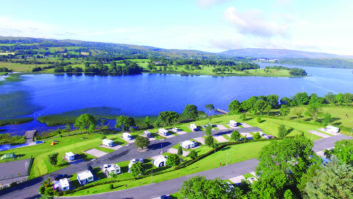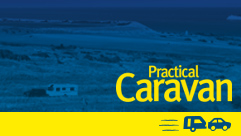Clover leaves, Guinness, Riverdance, Danny Boy, James Joyce, Westlife, the Luck of the Irish; whatever your preconceived ideas of Ireland are – cast them aside and be prepared to be amazed.
What initially takes most visitors by surprise is the size of the island. Ireland, separated from Great Britain by the Irish Sea, is 32,598 square miles in area. 85% of the island is taken up by the Republic of Ireland, within which are 26 counties. A quarter of the 4.9 million population of the Republic lives in the capital, Dublin. The remainder of the island is Northern Ireland, a part of the United Kingdom.
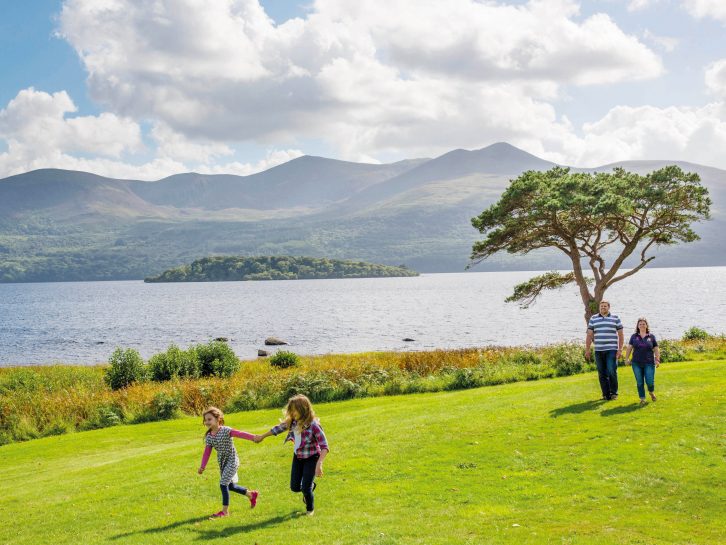
Caravan holidays in Ireland can be classed as arcadian idylls. Ireland is an immensely friendly country where locals can’t do enough to help, and with a good network of campsites and caravan parks, regulated by the Irish Caravan and Camping Council, holidaymakers taking their caravans will find a laid back world of rural relaxation.
First-time visitors to Ireland are always amazed by the incredible beauty of the island, unaware of its dramatic coastline, giant lakes, attractive rivers, mountains, forest parks, quaint whitewashed thatched cottages and, in places, wild remoteness of a large island with a small population.
For many travelling to Ireland by ferry, Dublin and its environs on the east coast are about as far as visitors get. Dublin is great, with its elegant Georgian architecture, literary heritage centred around the Abbey Theatre (Ireland’s National Theatre), and imposing Trinity College, home of one of Ireland’s most significant treasures The Book of Kells, all centred around the banks of the River Liffey. But there is much, much more to Ireland.
Head out to the northwest coast and you will discover an Irish speaking world in County Donegal, where the rugged coastline of the Inishowen Peninsula withstands the force, yet is shaped by, the might of the Atlantic Ocean. With sheltered sandy beaches in picturesque bays, the peninsula has a tremendous maritime history while southwest is the Glenveach National Park. The park is home to a large herd of red deer and the ominously named but euphorically beautiful Poisoned Glen, a marshy valley with dramatic cliffs.
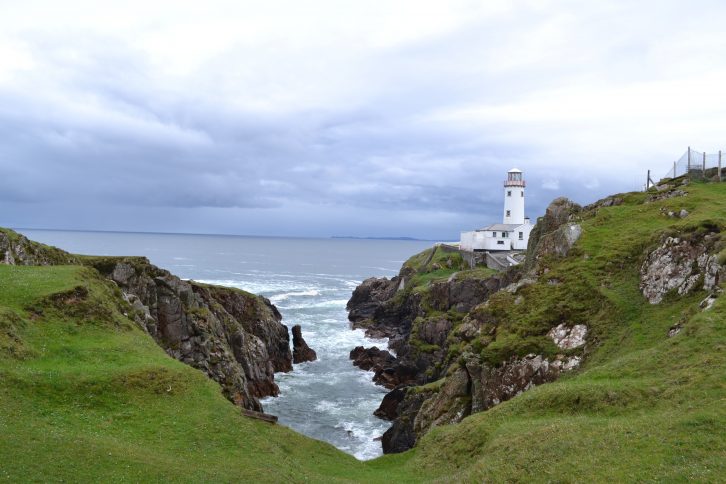
Further south still are the Blue Stack Mountains, the county town and the sweeping beaches in Donegal Bay, known for excellent surfing around the town of Bundoran.
Below Donegal is Sligo, a west coast county with connections to the literary W.B. Yeats who was born and is buried in the county. Hire a boat and island hop your way around Clew Bay in neighbouring County Mayo; there is one island for every day of the year, or visit the elegant coastal town of Westport and Westport House, ancestral home of the Pirate Queen Grace O’Malley, a legend in Irish folklore whose family once ruled the west coast.
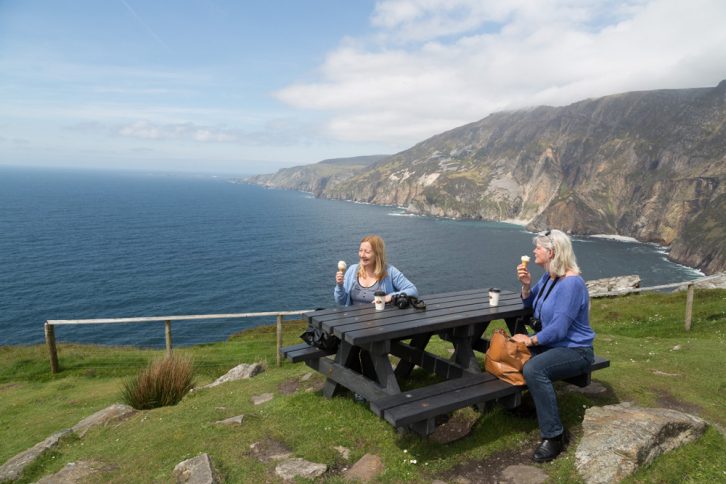
The mid-west coast of Ireland is dominated by the Connemara, an outstandingly beautiful wilderness of marshland, thousands of tiny (and not so tiny) lakes, and the Twelve Pins mountain range providing a scenic panorama to deep blue seas along a jagged shoreline of inlets, bays and offshore islands. North of the area is Killary Harbour, Ireland’s only glacial fjord while just east of the Connemara, whose semi-wild ponies make an occasional appearance, is the vast Lough Corrib, itself filled with 365 uninhabited islands and considered an angler’s paradise.
At the southern foot of Lough Corrib, where the River Corrib drains into the sea is the city of Galway, Ireland’s largest city on the west coast, and a mecca for lovers of seafood. Look out for Galway Hookers; these are the traditional wooden sailing boats that sport giant sails.
Not far off the coast, guarding the entrance to Galway Bay are the Aran Islands. If parts of mainland Ireland sometimes feel remote and from a bygone age, the Aran Islands, accessible on day trips with an exhilarating ferry ride, are steeped in traditional Irish culture, their myriad of stone walls and ancient rural farming methods providing a retreat from the fast pace of modern life.
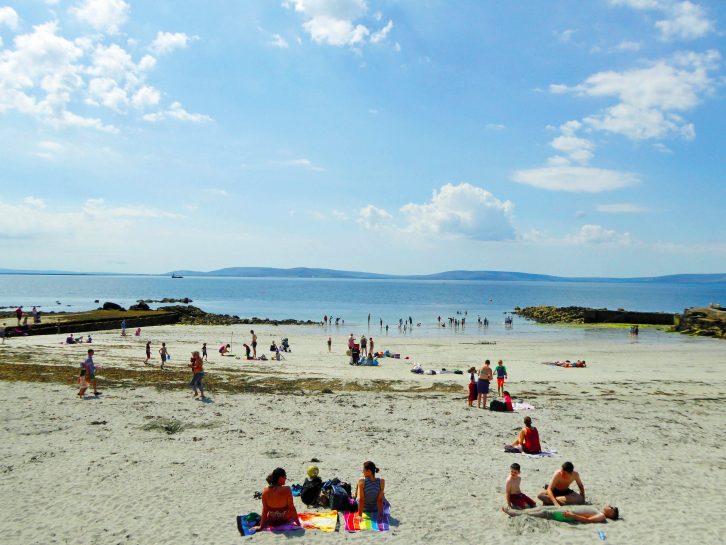
Below Galway Bay is The Burren, a UNESCO Geopark and area noted for its wild, rocky outcrops of limestone. The most remote is around the highest point of Mullaghmore while on the area’s west coast are the Cliffs of Moher, spectacular sheer cliffs that colour pink in the evening sun and rising 650 feet from the frothing sea; best seen from O’Brien’s Tower north of the cliffs.
Ireland’s southwest coast, south of the River Shannon estuary, is a land of wild beauty far removed from chic city life. Take a drive around the sea-hugging road on the western tip of the Dingle Peninsula or follow the coastal Dingle Way on foot. A better-known circular tour, one of Ireland’s most famous ‘landmarks’ is the Ring of Kerry, a trip that circumnavigates the Iveragh Peninsula in County Kerry. Travelling through the Killarney National Park – itself a more than scenic destination with the Killarney Lakes – the 112-mile route attracts thousands of tourists alike. To avoid the coach tours and potential traffic jams, an alternative is to walk the Kerry Way or pedal your way around the Ring of Kerry Cycle Trail, which uses quieter roads than those used by the official touring route.
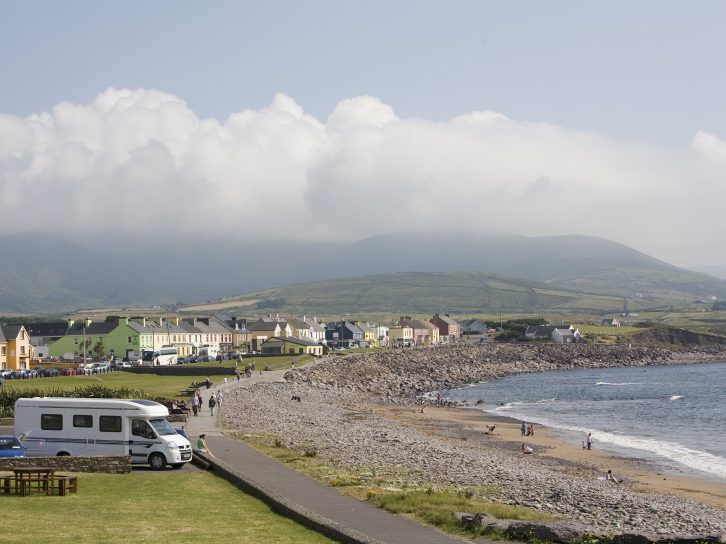
One after another, the peninsulas keep coming around the southwest coast, from the Beara Peninsula and Bantry Bay – considered one of the most beautiful spots in Ireland – to Mizen Peninsula and the islands of Roaringwater Bay; there is no stopping the scenic viewpoints and places to gasp and be overawed by such natural magnificence. On the south coast is the inland port of Cork with the spectacular natural Cork Harbour. Here is nestled the town of Cobh from where hundreds of thousands of migrants left for the New World in the 19th century. The area is steeped in history while the cosmopolitan city of Cork, with its riverside quays and restaurants, provides an urban elegance to an otherwise rugged rural region.
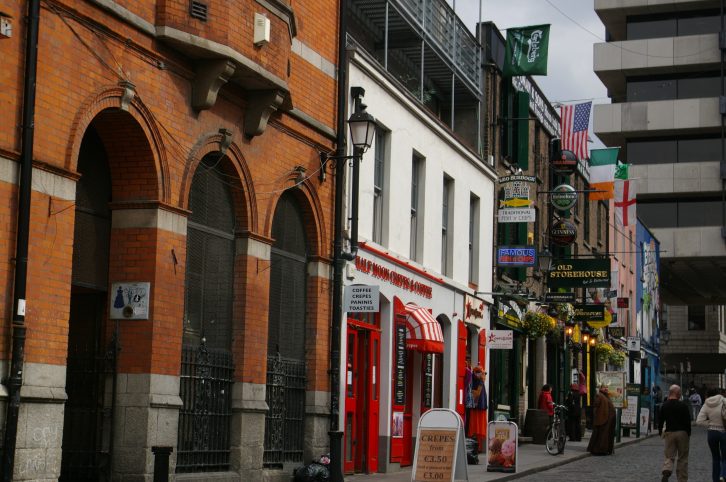
Ireland’s east coast is altogether different from the wilderness of the west, its slightly more sheltered bays creating long sandy beaches at Malahide, north of Dublin and Drogheda, not far from the border with Northern Ireland. Of most significance west of Drogheda is the Boyne Valley, a picturesque river valley – known as the Valley of the Kings – where the Battle of the Boyne took place in 1690.
South of Dublin, the Wicklow Mountains dominate the landscape. Less than an hour’s drive from the capital, these are the only significant uplands in the southeast, with pretty glens, loughs and valleys (such as the Vale of Avoca, brimming with cherry blossom in spring) dividing the scenic ridge of hills. Head to the village of Avoca, where the BBC TV series Ballykissangel was filmed and the Meeting of the Waters, a very pretty spot where two rivers meet. Just north of the Wicklow Mountains is the delightful village of Enniskerry, popular with tourists visiting nearby Powerscourt House and Gardens, considered the finest gardens in Ireland.
Ireland’s Midlands region is taken up with ecologically important wetlands and peat bogs, historic towns like Tipperary, Limerick and Cashel, where the Rock of Cashel is one of Ireland’s most significant tourist attractions. The Rock, overlooking the Tipperary plain, is a 5th century stronghold of the Kings of Munster and the seat of power for more than a millennium. Despite being besieged in 1647, much of the medieval structures are still in tact.
The Midlands’ other main attraction is the River Shannon, Ireland’s longest river and one that, with its tributaries, is lined with anglers eager for a bite. Along its length are a series of loughs, Lough Derg being the largest and a mecca for watersports.
Things to do
1.Visit the Guinness Storehouse in Dublin to learn more about one of Ireland’s most famous brands. Discover the history, and enjoy a drink at the glass-housed Gravity Bar close to the top of the St James’s Gate Brewery, the original home of Guinness.
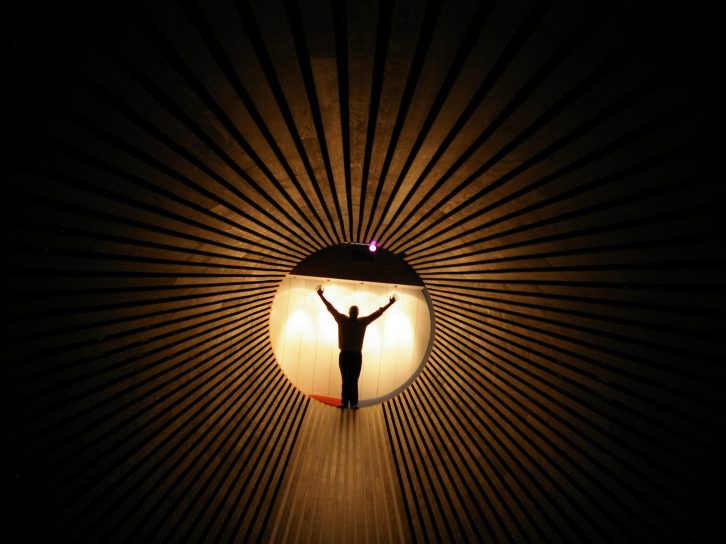
2.Experience traditional Irish music at a local pub to hear some toe-tapping tunes. Music nights feature heavily in most Irish pubs, but big centres for traditional music are at Doolin on the west coast, Tralee, Killarney, Westport and, also, Dublin.
3.Watch how the finest crystal glass is made on a factory tour of Waterford Crystal, considered some of the most prestigious crystal glass in the world. Now in the very heart of Waterford City, the company has traditions that date back to 1783. You’ll find other crystal glass manufacturers elsewhere in the city, often former employees of Waterford Crystal.
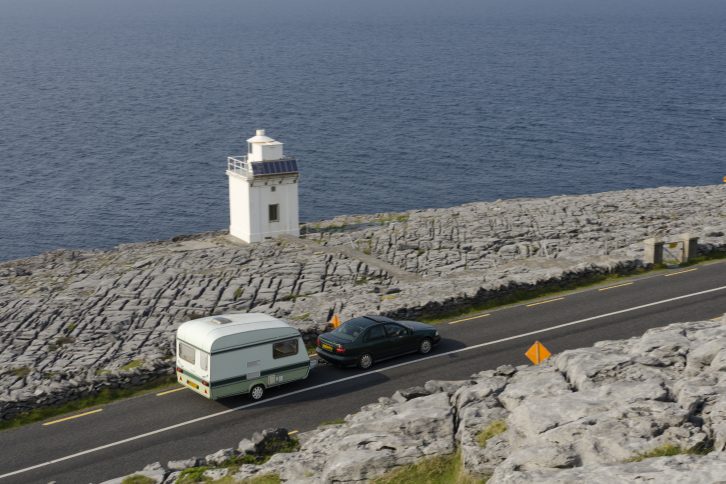
4.Step out on to the geological wonder that is The Burren, a vast limestone plateau in north west County Clare. The exposed layers of rock, sweeping down to the sea in parts, is a wondrous sight, especially when summer flora creep up through the cracks and crevices.
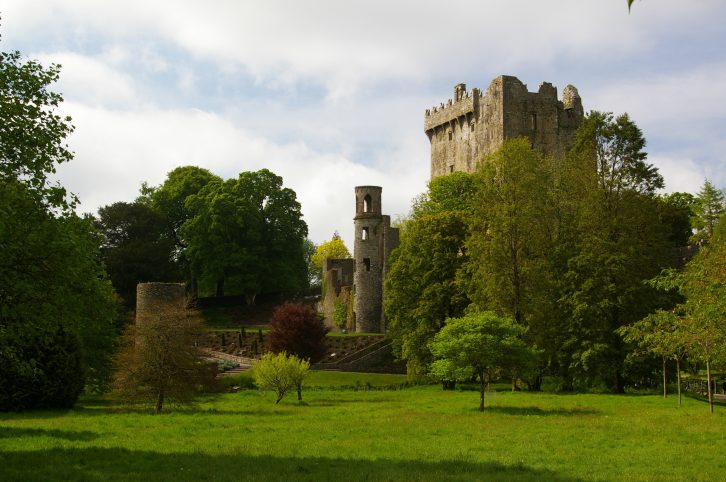
5.If you visit the southwest of Ireland your trip will not be complete without kissing the Blarney Stone, high on a wall below the battlements of Blarney Castle, just outside Cork (County Cork). It’s a feat of gravity – held by the legs, you must be suspended beneath the parapet to kiss the stone backwards!
6. Be sure to visit sections of the 1,600-mile Wild Atlantic Way, a road trip that follows the entire west coast of Ireland from Donegal to Cork. Many of the narrow, coastal roads are not suitable to tow a caravan , but there’s no reason why you can’t tour the route in sections, stopping at a campsite while you explore the area by car or, better still, bicycle, before moving on.
When to visit
Perhaps unsurprisingly, there are lots of things to do in Dublin, the city seeing the largest number of big, annual events taking place, including the Six Nations rugby tournaments between February and April at Lansdowne Road, the International Dublin Writers’ Festival in May, Ireland’s premier literary event attracting the finest writers in the world, and also Taste of Dublin in June, a massive foodie fair. Then, make sure you’re in town for NYF Dublin, a music and arts festival that takes place annually, over New Year.
Elsewhere, The Gathering Traditional Festival held every April in Killarney (County Kerry) is the highlight of the Irish cultural calendar for traditional musicians and dancers, the Spring Racing Festival at Curragh (County Kildare) in March is the highlight for horse racing punters (though just one of many horse racing events throughout the year), while the Galway International Oyster Festival in September rivals Dublin’s food fairs for size and spectacle. Watch out too for Cork’s Midsummer Festival in June. It is, however, just one of 23 festivals taking place in the city each year!
Of course the whole of Ireland goes crazy for St Patrick’s Day on 17 March, with week-long festivals and events nationwide. National Heritage Week at the end of August is also celebrated nationwide.
Getting there
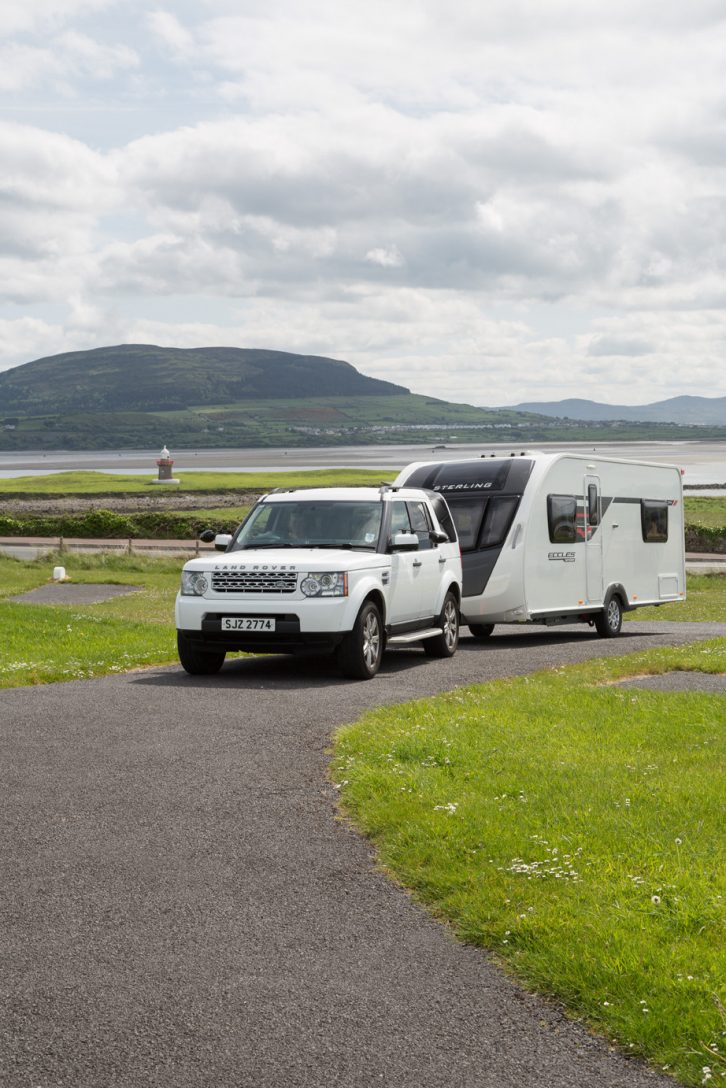
Stena Line has sailings between Fishguard and Rosslare and Holyhead and Dublin. Irish Ferries operates between Holyhead and Dublin, and Pembroke and Rosslare. P&O Ferries sail between Liverpool and Dublin.
Travel to north west Ireland may be easier via ferry sailings to Northern Ireland. Stena Line operates between Cairnryan and Belfast, as well as between Liverpool (Birkenhead) and Belfast. P&O Ferries sail to Larne from Cairnryan.
The M1 Dublin Port Tunnel from Dublin Port to access the M50 ring road operates a toll (currently €3 off-peak – peak time is 4pm until 7pm, Monday to Friday), but it is worth every penny to otherwise sit in traffic through the centre of Dublin and negotiate the mine of streets out of the port. There is also a barrier-free toll on a section of the M50 (Dublin ring road) between junctions six and seven (junction six required for the M3 to north west Ireland; junction seven needed for the M4 to Galway). The toll, currently €3.20, can either be prepaid online (in which case, it’s cheaper) or otherwise must be paid by 8pm the following day of travel at a retail outlet displaying the Payzone brand, nationwide. The easiest way is to set up a visitor account for the designated amount of time you know you’re going to be in Ireland, which avoids the possibility of accidentally forgetting to pay.
Other short toll sections of motorway, paid at source, include, among others, the M6, the M7/8 interchange and a short stretch of the M8 to the north east of Cork.
Ireland was once notorious for poor road surfaces and desperately slow journeys. The upgraded motorways, radiating out from Dublin, have vastly improved the island’s network with generally quiet routes that make journey times across Ireland quick, smooth and efficient.
Where to stay
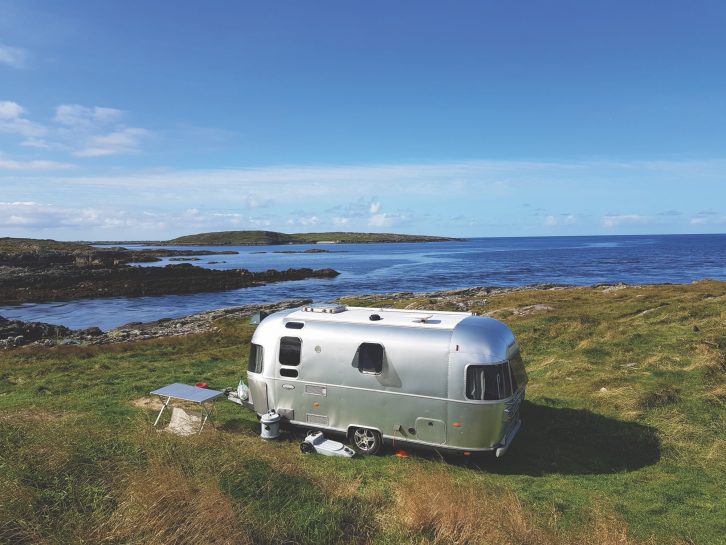
There are campsites and touring parks all across Ireland, many of which are members of the Irish Caravan & Camping Council. These can range from parks suitable for visiting Ireland’s great towns and cities, or parks with exceptional rural or coastal views.
If you liked this… READ THESE:
Northern Ireland: Practical Caravan Travel Guide
County Donegal: Practical Caravan Travel Guide
Best four-berth caravan for 2022
If you’ve enjoyed reading this article, why not get the latest news, reviews and features delivered direct to your door or inbox every month. Take advantage of our brilliant Practical Caravan magazine SUBSCRIBERS’ OFFER and SIGN UP TO OUR NEWSLETTER for regular weekly updates on all things caravan related.
Whatever your preconceived ideas of Ireland are, cast them aside and be prepared to be amazed
